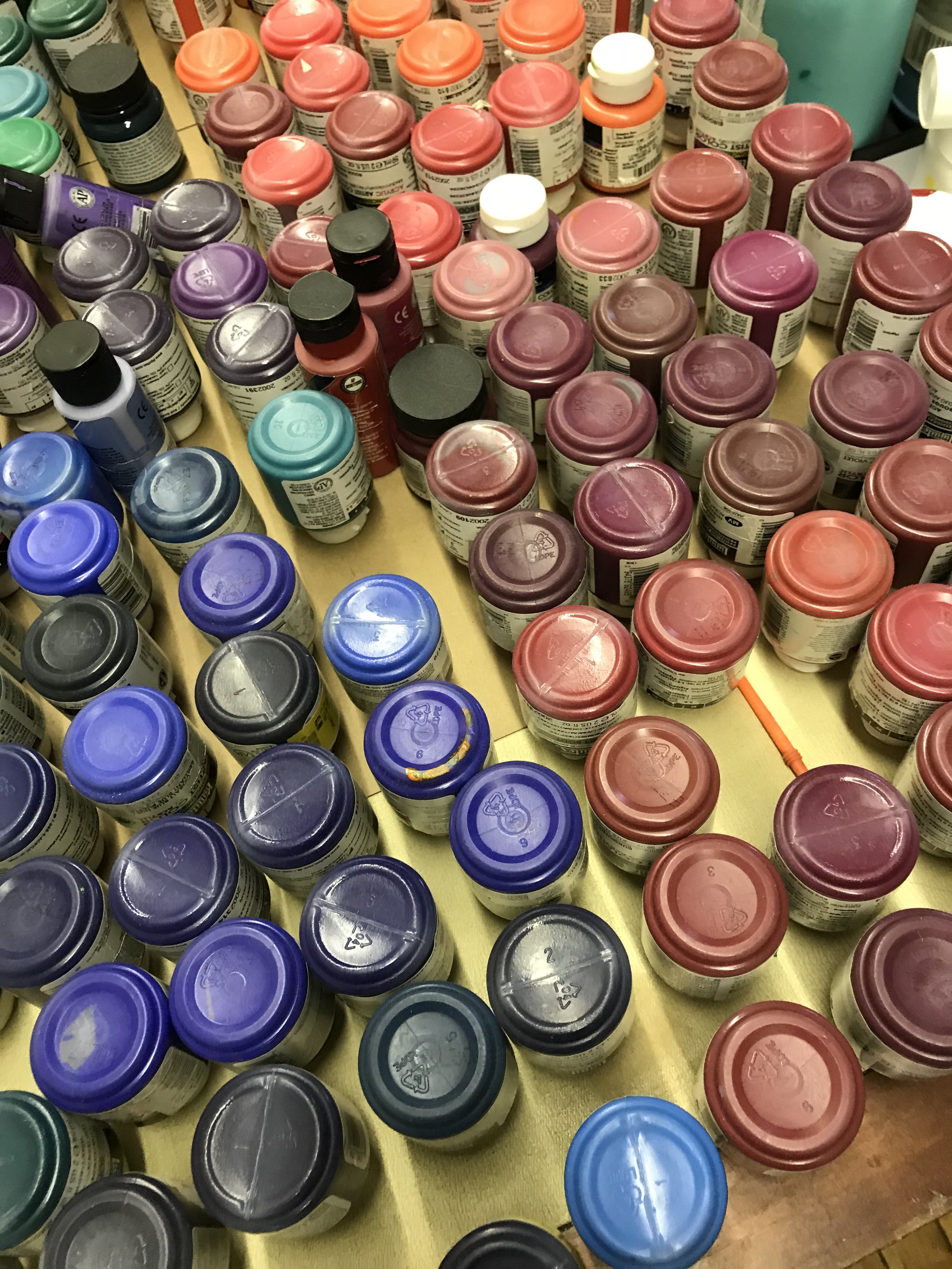Storing Liquitex Soft Body Paint Jars Upside Down So You Can See The Colors Easily
I have mixed feelings about sharing with you Kim Weston's approach to storing her Liquitex paint jars. Kim, an artist in New Haven, who I met at Erector Square's Open studios, recently, showed me a great trick. If you want to see the colors of your paint at a glance, you can store your jars of paint upside down. I do like the idea very much, BUT here is my one and BIG concern.....I'm very messy with my paint jars. The cap barely fits back on the jar when Im finished playing around with my paints in a Mixed Media piece. In order for me to model my studio after Kim;s, I would have to vow to work very carefully, wiping the top of the jar after each use and then screwing the cap back very intentionally. This will take some time for me to clean up my act. But in the meantime, I thought I'd share this idea with others who may be more meticulous when working.




